Anisa Mpungwe: Now clothing brands are offering a lifestyle
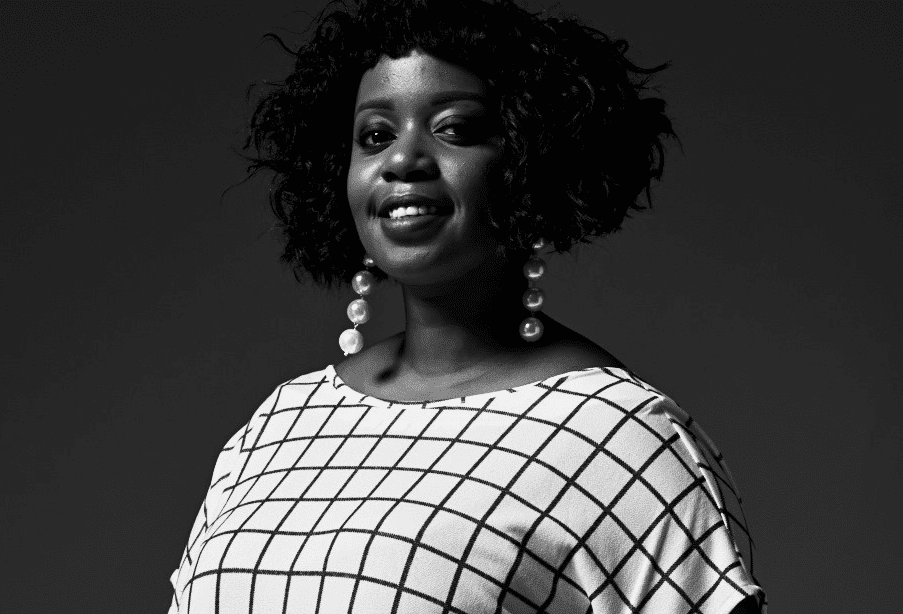
[bctt tweet=”I am African so that aesthetic cannot disappear, it will always be there – Anisa Mpungwe” username=”SheLeadsAfrica”] Anisa Mpungwe is a Tanzanian born, South African raised fashion marvel. She started her career at age 19 working for various fashion houses, magazines, and apparel factories within Africa, America, and the UK. Not a stranger on international runways, Anisa has showcased her work in fashion weeks in South Africa, Mozambique, Angola, Italy, Sweden and New York. You might have spotted this Motherland Mogul’s garments on stars like Solange Knowles, Anele Mdoda, Lira, Simphiwe Dana, Amel Larrieux, Sharon Smith, and Yukimi Nagano from Little Dragon. The former US first lady Michelle Obama donned Anisa’s clothing on her first visit to Johannesburg. Anisa has won the African Fashion International Emerging Designer Award 2013 and was the MTV Transform Today Award nominee. She has collaborated with brands such as LG, SPREE, Samsung, Maserati, Converse, Nestle, BET and Bobbi Brown. You can find Anisa between Johannesburg, Pretoria and Dar es Salaam studios. SLA contributor, Kutlwano Mokgojwa, checks in with the humble and spirited Motherland Mogul to get the lowdown on celebrating 5 years in business, creating a lifestyle brand and shipping worldwide. It has been 5 years since you opened the door to your flagship store, what would you say you owe to still being in business today? I think consistency is important in any business and across everything that you do. There are certain things that you must always do and always take care of. Another important thing is having a good team. There are days when you will not feel so great and you do not want to deal with customers, you can always pass the responsibility along when you have a good team and in my experience, getting a good team together takes a while. Your brand is described as having a strong African influence, prints and modern tribal. Do you think this description limits the brand or does it open the right doors? I think it is all of the above. People always need to relate your brand to something, whether it is an experience in their lives or something they have seen. I am African so that aesthetic cannot disappear, it will always be there. Our aesthetic will always be around the African heritage but I am also really interested in sportswear for example. I have travelled and moved around a lot and because of that, I am able to come back and tell a story through the garments. The change in the design is not that I am trying to target a specific person but it is just where the LoinCloth and Ashes (LCA) story is. You have paired up with vibrant talk show host and radio personality Anele Mdoda as your brand ambassador, how does she embody the LCA brand? Anele is quite a complex woman and that is an LCA girl – somebody who is strong and vulnerable. Somebody who has something to say wants to elevate and fully enjoy her life. Anele is all those things and she is crazy too, she is completely nuts and I love her for that. I identify the LCA girl in her; she really aspires for better in all areas. You are known to feature on a lot of runways. How do you come up with inspiration for each collection? How do you incorporate your brands aesthetic to ensure your collections are true to the LCA brand whilst still being fresh and relevant? It has to do with what is happening for us at that time but also keeping in mind who our audience is. For example, if you do something like New York Fashion Week, what they would expect is a whole lot of bead work and when you show something else it creates a kind of shock wave. When you take African print somewhere like Stockholm where they are known for being minimalist you will blow their mind with so much colour. Same goes for Germany or Berlin. I know we have one of the biggest client bases in Berlin and they love the print because they don’t have that sort of thing there. So when we create collections it is about flying the flag but doing so in a manner that is relevant to the audience and to the brand. [bctt tweet=”When we create collections it is about flying the flag in a manner that is relevant to the audience” via=”no”] Since your establishment as a women’s wear brand, you have ventured into quite a number of things such as your junior wear, home décor, giving industry talks and consultations. What motivated you to head in that direction and how has that contributed to LCA being such a big brand in the fashion industry? There was a time when you went into a clothing store and it only offered clothing but now many brands are offering a lifestyle. So if I can’t afford the dress, I can maybe afford to buy a napkin or to buy my little baby a dress. I wanted LCA to also follow that suit because we don’t only talk about women’s wear when we are in the studio, we talk about everything else. I am not known to hide my experiences so that is where consulting and mentoring comes into play. [bctt tweet=”We are looking to celebrate feminism and rediscovering the word sexy – Anisa Mpungwe” username=”SheLeadsAfrica”] You have a new collection coming up, can you tell us more about that? Well, I cannot say much but it is a summer/spring collection. We are looking to celebrate feminism and rediscovering the word sexy. What does it mean for LCA? It means there will be lower necklines and high hems. You started shipping your clothes worldwide this February, how would you advise a small business owner who wants to extend their distribution in the same way? Firstly, I think it is important for one to evaluate their international client base. A lot
Miyoba Buumba: Venture into areas that haven’t been explored
Miyoba is a designer, entrepreneur and environmental advocate with two years work experience with the nonprofit sector. She owns a Zambian design brand called Mwabonwa which makes African print beddings, Jewry, adult and children’s wear. Miyoba is also a youth leader of Echo Change Zambia which conducts environmental awareness activities in schools and communities and has spearheaded the planting of 33,571 trees in Monze District of Zambia from January to March 2017. She holds a Bachelor of Education with environmental education form the University of Zambia. Her main skills include capacity building, community mobilisation, advocacy and enterprenuaship. Miyoba plans to expand her brand and open a design school where she will teach young girls and boys entrepreneurship skills. What’s your strategy of being in the forefront as a young African entrepreneur? My strategy is venture into areas that have not yet been explored and capitalise on them. Unlike most fashion entrepreneurs who run either a small tailoring shop or a sales outlet, I plan to set up a clothes production factory and sales outlet that will have various sections which go above and beyond customer’s expectations. How long do you think it will take to kill the second hand clothing business? If more textiles industries are established, more designers begin to use local raw materials and local consumers see the value and begin to support locally made products, it will take 20 years or less. The second hand clothing business is so popular because it’s cheap. Do you think it will be cheaper when we produce ourselves? Absolutes yes. The reason why brand new clothes are expensive is because they are produced internationally and involve a lot costs from production to consumption. If we produce our own clothes using our local raw materials, we will not only making brand new clothes affordable but also creating employment from textile manufacturing, clothe production and later on sales and marketing. How are you planning on bridging the gap for those that are struggling to also sell better quality clothing? Miyoba can you share with us your environmental concerns? I have beliefs and values that guide me to protect the environment in my every day activities. The environment is our home where all life only thrives when it is safe. A defiled environment can not support life, businesses and economies. We have not done so much in protecting our environment in the past as the resulting impacts are threatening the very lives we are trying to improve and the very businesses or economies we are trying to build. What are some ways l can help the environment that l might not be aware of? One can help the environment by reducing the use of plastic bags when shopping, choosing to buy environmentally friendly products, use less water, recycling products, planting trees, growing organic products and generally speaking to friends about good environmental practices. If you were to be reborn, would you rather live at the beginning of the world or at the end? I would live at the beginning because I feel we have wronged the earth so much without realising and now that I know what damage we humans have done to the planet, I would love a second chance with mother earth, just to start all over again.
Elsie Mutsaka: You must do what sets your heart on fire
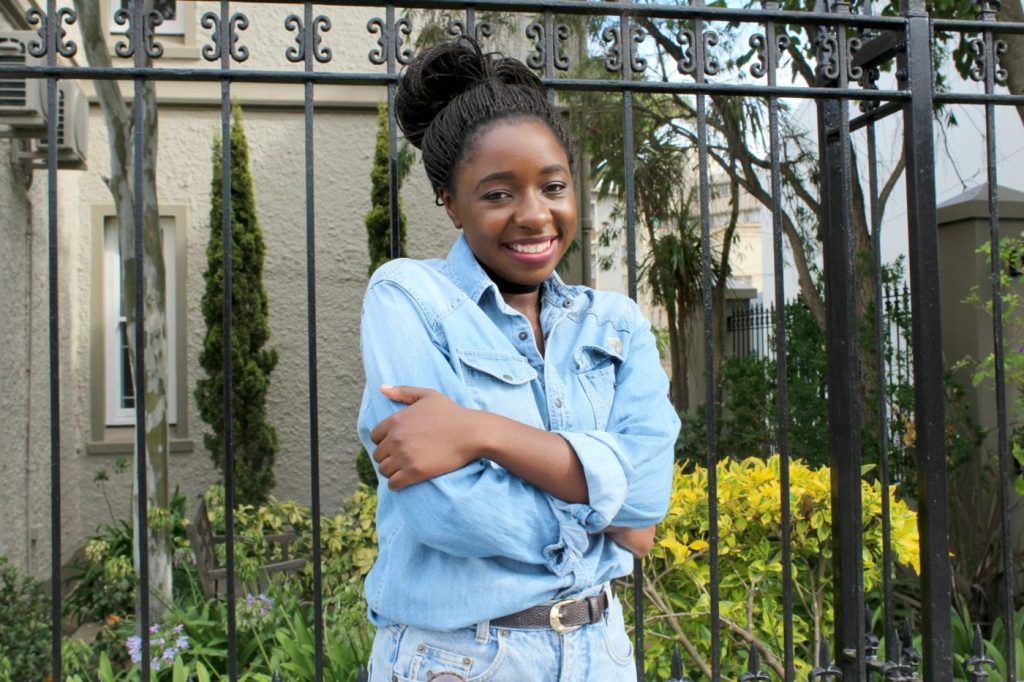
[bctt tweet=”I realised that my brand and I are one and so my blog should be the same @ElsieMuts” username=”SheLeadsAfrica”] Elsie Mutsaka is an up and coming PR dynamo, social media marketer and blogger from Zimbabwe based in Port Elizabeth, South Africa. Her accessible fashion aesthetic is inspiring women from all walks of life to be confident in their style. After discovering her personal style, Elsie started getting questions about her outfits and where she gets pieces. That encouraged her to start blogging and share her style with a wider range of people. SLA contributor Anelisa Nokoyo had a chat with Elzie to find out what inspired her quirky fashion blog, and what she has in store for the future. When did you start blogging? Initially, I started blogging last year, April 2016 under the name differentlyconfident. Then this year I changed my domain name to my full name. I realised that my brand and I are one and so my blog should be the same. What would you like to achieve with your blog? I have always wanted to share my style with people and through this blog, I manage to do just that. Most importantly I wanted to bring about the idea that style is not about the price tag or label, and that you can look perfectly chic while still living within your means. Growing up I had times when I was not as confident about how I looked, but as I grew older I became comfortable in my skin, looks, and style. That’s the exact same message that I would like the people that read my site to get each time they read my posts. It’s basically a site for any type of woman to visit and get outfit inspiration, love the skin they’re in and know that they can create their own unique style. Also, while people shy away from thrifting, I find that it’s one of my favourite things to do with my sister each holiday, as you get stuff that nobody else has. So I always mention where I get my clothes for each blog post and I’m not embarrassed that I shopped a SALE or that I thrifted. Ultimately, I intend on building a brand that inspires and speaks to women who fully know and understand themselves or who at least aspire to. What do you enjoy most about blogging, and what are some of the challenges? I really enjoy putting outfits together and reading comments from people who read the posts. Most of the time I really appreciate it when people give their honest opinion and usually, my family and friends do the most. I think one of the challenges is when the writer’s block strikes. Sometimes you really have good photography but you are just not satisfied with your writing, but when I eventually get it together it’s amazing because I get to think out loud. What are some of the wardrobe essentials that you think each woman should have? Well, personally I believe everyone should have a really good quality blazer, a good pair of denim jeans, black pair of heels, very good quality handbag and at least one vintage or pop of colour item. I could go on and on, but those are my faves, just that I own more than one of each. Whenever I am asked to, I style people or help them create their dream wardrobe so the essentials differ sometimes depending on your style. Besides fashion, what else do you write about? Besides fashion sometimes I write about things that matter to me like issues that women face, but I do this as a contributor for other platforms. Other times on my blog I share about my beauty routines which are quite simple. What are some of the lessons you’ve learnt since delving into the world of blogging? I have learnt that you must do what sets your heart on fire, sometimes trends in the blogging sphere are awesome but they are not always your thing. It’s okay to do what you feel comfortable in. Also, there are so many bloggers out there and everyone has a niche and something unique they bring to the table, so it’s good to celebrate others. I enjoy commenting on other people’s blogs. It does not take anything away from me when their work and skill grows, and if you appreciate other people’s work oftentimes the favour is returned. [bctt tweet=”If you appreciate other people’s work oftentimes the favour is returned” username=”SheLeadsAfrica”] What else do you do besides blogging and how do you blend the two occupations together? So, besides this blog, I do public relations, which means I spend my days working as a social media marketer for an online store and managing other platforms for clients. Because the social media thing is my 9-5, I usually blog in the evenings and do shoots on Saturday mornings. It’s all about organising your very little time well. The two also blend well because it’s all use of the digital media, so sometimes I reply to comments on the job. bcct You need to use what you have and what’s around you Give us your top three tips that you’d give to anyone who wants to start blogging… Once you figure that you want to blog GO FOR IT! I mean just do it. Secondly, just trust the process and even if like 3 people read your blog that’s okay, it takes time to grow an audience. When I first started blogging a close friend of mine offered to take pictures of me, she had no camera experience whatsoever but as my blogging got better, her photography did as well and because she believed in me so much I gained confidence. What I am trying to say is you need to use what you have and what’s around you. I did not have a professional photographer but I had a friend and that helped me grow, and here
How to start/run a fashion label with no money and no clients
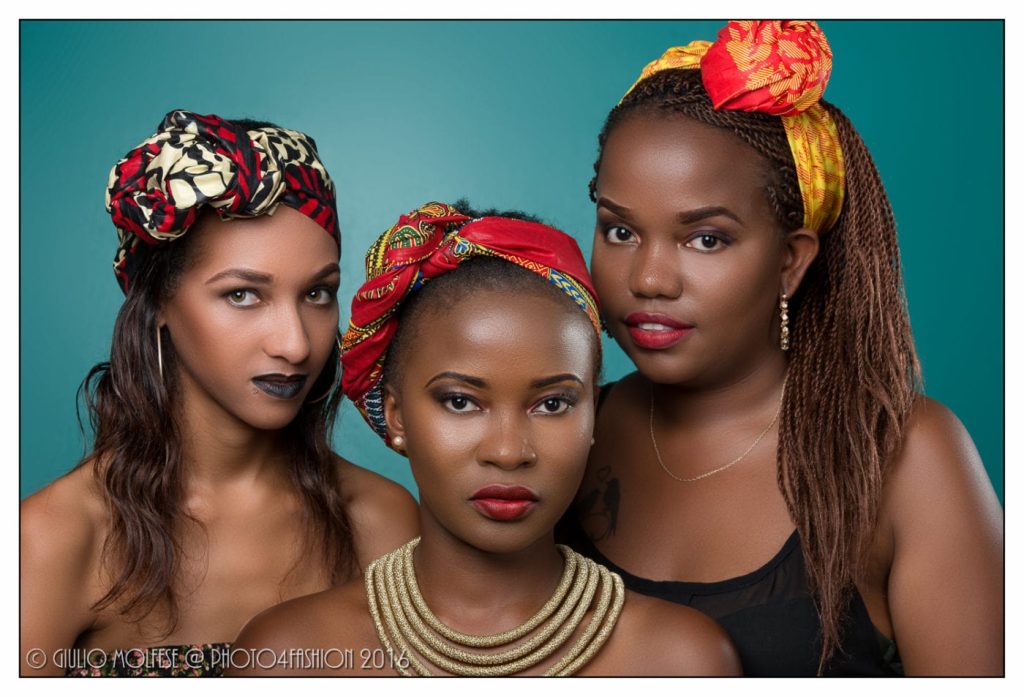
[bctt tweet=”No money or client at the outset poses a challenge but doesn’t render the situation hopeless” via=”no”] No money? No Clients? …No Problem! In business as in love, it is not always the individual with the ‘deepest pockets’ and the best connections that wins. In most cases, it’s the individual who applies their imagination and creativity that wins the deal or the girl. Starting a creative business of any kind with no money can seem like a daunting task, regardless of what industry you might be trying to break into. Despite the challenges you will have to face on this journey, a lack of money or a lack or clients need not be an impediment to your pursuit of this lofty goal. With these five essentials in mind, you should be well on your way to securing your first client with absolutely no money in the bank! Label DNA Before you call all your friends and family to tell them you are finally starting your very own fashion label, you need to understand your label’s DNA. What kind of clothes will you make? What type of clients will you cater to? What is your style? What sets you apart from other fashion labels…what is your DNA? Many aspiring entrepreneurs do not figure this out at the very beginning and then find themselves swept from corner to corner by the various fashion trends constantly emerging. Your label DNA lets the world know what you are about. Are you an eco-friendly fashion band? Do you specialize in street wear? Are your clothes only meant for A-list Africans or are they meant to make the hard working career woman feel powerful as she chases her dreams? Your label DNA tells you and all your potential clients what your brand actually stands for, thereby setting the tone for the type of clients you are likely to attract. [bctt tweet=”Your label DNA tells you and all your potential clients what your brand actually stands for” via=”no”] Chutzpah The fashion industry is cut-throat, with more and more brands coming into the industry, not just in your country, not just in Africa…in the world! With all this competition, an entrepreneur must have what the Jews call ‘chutzpah’, which roughly translates to audacity, nerve, supreme confidence. You must be able to stand by your choices- especially your creative choices- even when only one person gets it. The biggest fashion trends were not started by shy and timid people or the companies they run. The world’s trends are started by those that a willing to tap into the very core of their beings and dig out bold ideas, radical ideas, ideas that the rest of the world has to catch up to. Think Levi’s denim jeans, Chanel’s ‘little black dress’ and others that gave those then tiny brands, the chance to truly contribute to the world. With no money and no clients, a brand with a little chutzpah can go a long way in carving out its very own piece of the delicious fashion pie that is up for grabs. [bctt tweet=”You must be able to stand by your creative choices even when only one person gets it” username=”SheLeadsAfrica”] Guerilla marketing The concept was first promoted in 1984 and has never had more significance than in the 21st century with all our smart phones and social media platforms. Never has there been a time where the small, barely recognized fashion label can give huge and well-established brands a run for their money. Guerilla marketing is suited to small brands that do not have the financial resources to create expensive advertisements for their products. Guerilla marketing is all about creatively gaining the attention of your target audience with bold and most times unconventional marketing strategies that cost close to nothing. This will mean going against the grain and catching your target market by surprise through your clever marketing. It might cause you to step on a few toes, maybe a few people will instantly dislike it. One thing for sure though is, you will become the talk of the town which will eventually ring the cash register. Like Oscar Wilde once wrote, “There is only one thing in world worse than being talked about, and that is not being talked about.” The recipe for a perfect guerilla marketing strategy; little or no money, a fresh target market and a tonne of creativity and imagination. Social media The age of social media platforms is upon us and it would be remiss to ignore what a great impact setting up a social media page for your fashion label can have on your growing business. However, a note of caution must be given at this point; when setting up and running a social media page for your fashion label, it is very important that you have a clearly defined strategy. Your social media strategy includes all the things you will ‘post’,’ like’ or ‘reblog’ as well as those that you will not include on your professional pages. Your fashion label’s social media pages are an extension of your brand DNA, in fact, they help communicate your brand DNA more effectively, they re-enforce the lifestyle and mindset that your fashion label promotes through the clothes and accessories you create. With a lot of creativity and no money, you can set up a page for your fashion label that will see you rise from zero followers to thousands, or even millions of followers by staying true to your brand DNA and being creative with the content that you put up on the page. No money down and yet you can be assured of scoring a few great clients if this responsibility is handled with care and precision. Skills The lack of financial resources or clients at the outset poses a challenge but doesn’t render the situation hopeless by any means. The lack of the required skill set, however, can mean that even if an individual found themselves with a huge reserve of financial
Everlyn Nguku: Textile design and fashion technology is amazingly dynamic
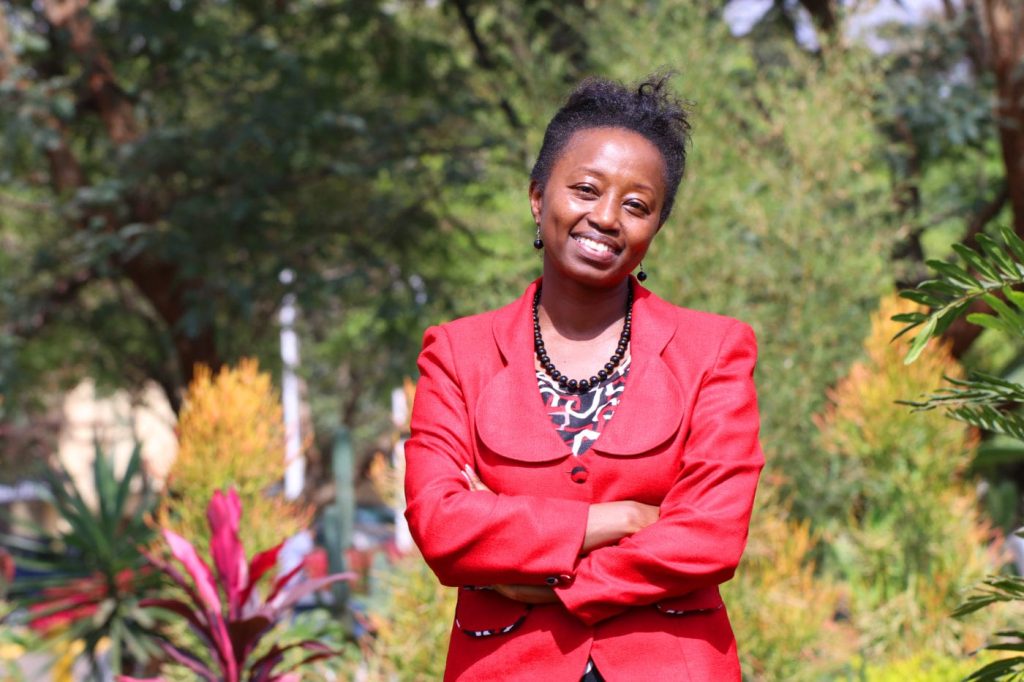
[bctt tweet=”Meet Everlyn Nguku the woman setting Africa on a new journey toward advanced textile manufacturing” via=”no”] Everlyn Nguku is one of Kenya’s few and little-known textile scientists. She was more of the artsy type growing up. But while she was in University studying fine arts, her interest shifted to a more scientific angle. Unbeknown to her at the time, this shift in interest would catapult Everlyn to establish East Africa’s first silk quality control laboratory, and set Sub-Saharan Africa on a new journey toward advanced textile manufacturing. What exactly does a textile scientist do? A textile scientist specialises in various areas including; new technologies related to fibres, innovative textiles; textile chemistry, polymer and fibre science, processing, fabric development, quality issues among others. Textiles are multidisciplinary in nature. How did you come across this as a career? I did not start out as a Textile Scientist. I studied Fine Arts for my first degree and looked forward to a career in teaching design or design related activities (I am the “creative” in the family). However, as I studied my course, my passion for fabric and pattern shifted to fabric construction. I was intrigued and keen to understand the technical aspects of fibres and fabric. I then did my masters and the study focused on four natural textile fibres. This was the beginning of my journey with silk and science at International Centre of Insect Physiology and Ecology (ICIPE). I began to look at textiles beyond the design element. My Ph.D. focused on silk properties. I had to understand the science behind the silkworm that produces the silk, processing technology and quality of the resulting fibre. You are researching on the African Silkworm; tell us a bit about that? My work actually revolves around the domesticated silkworm Bombyx mori, although there are several commercial species of silkworms. B. mori is the most widely used for silk production; it is reared indoors and feeds on the mulberry leaves. This activity is referred to as sericulture, which is the practice of raisings silkworms to produce raw silk- the yarn obtained from cocoons spun by the worms. I take an interdisciplinary approach and multi-faceted research of silk that focuses on optimizing silkworm rearing techniques, and cocoon production, with a key focus on fibre quality and value addition initiatives for the production of various quality silk products. The research explores the mechanical behaviors of the silk fibre, which are key building blocks in the production of quality silk fabric. We also design silk fibre testing procedures to assess and systematically study the quality factor, tenacity & elongation, friction and wear traits. How many women are involved in this research? Within the institution, I am working with five female technicians who undertake rearing of the silkworms and processing of the cocoons and raw silk. A textile industry needs more professionals who understand the science and the business sense in manufacturing and processing the raw material, how can Africa tap into this? The industry is labour intensive and has the potential to offer significant employment opportunities. There is a need to equally invest in the skills and qualifications of people and promote the technical qualifications for people in the textile and apparel industries. African Universities do offer degrees and masters in textile design and fashion technology. What can be done to ensure that more of these graduates become the backbone of this industry? This sector in Africa is amazingly dynamic; however, it appears to be fragmented. Consequently, its potential remains largely unexploited possibly due to organizational weaknesses within the industry. In order to integrate graduates into the industry, there is a need for governments within the continent to prioritize the sector, unlock the potential, overcome existing problems of the textile industry and address issues that hinder the growth of the manufacturing industry. This strengthens and improves the entire textile industry and value chain for it to be competitive and remain relevant. In addition, possibly review the rules on textile imports especially the influx of cheaper clothing which seem to hamper the local industry in Africa. The industry should also recognize the potential of textile design and fashion technology graduates and the dynamisms they inject into the growth of the commerce and therefore need to nurture and engage this local talent. Some of the challenges you face revolve around ignorance and general disregard of research from a policy level. How are you pushing to get more attention on this issue and more government investment and commitment to grow the textile industry in Kenya? I am a member of Kenya Bureau of Standards (KEBS) Technical Committee on Blankets, Nonwovens, Threads, and Fibres. This is a forum that presents an opportunity to interact with the main industry stakeholders on issues related to textiles, standards and to an extent policy. Who would win in a fight, Wonder Woman or Black Widow? Hmmm…I had to look up the Black Widow…. didn’t know much about her ? All the same, my take is Wonder Woman. If you’d like to share your story with She Leads Africa, let us know more about you and your story here.
Caron Williams: The hip-hop maven behind The Plug Magazine
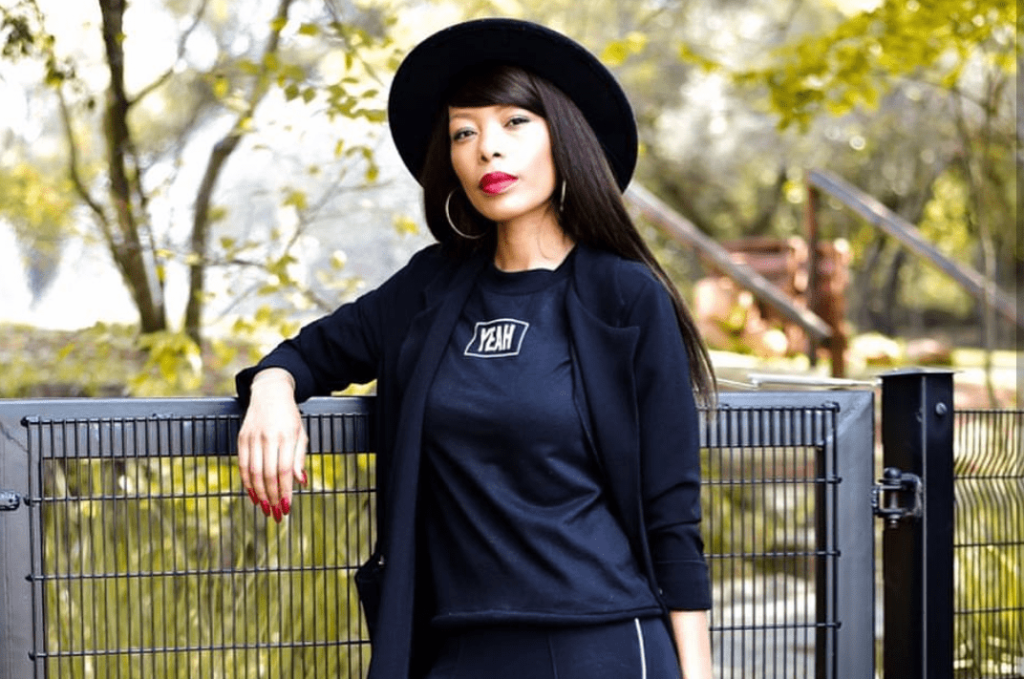
[bctt tweet=”It’s a balancing act offering our audience what they want to read & what we feel is an important story” via=”no”] By now, everyone in the industry knows the lovely Caron Williams. Hailing from Cape Town, this beauty has been in the creative industry for years and has now added “Editor” to her resume. The Plug, the new and freshest hip-hop online magazine has really changed the game in such a short amount of time. The Plug gives you the need to know and the latest on all things hip-hop, fashion and urban culture –locally and abroad. This magazine has been an incredible platform, giving us in-depth insight into our favourite local and international artists in a fresh and innovative way. As a young Black woman, Caron is breaking the barriers of a male-dominated industry, paving the way for young creatives. Having turned her knack for hip-hop into an incredible publication, Caron has clearly become a powerhouse in the making, in her own right. In this short interview, Caron gives a sneak peek into how she grew the magazine, being a woman in the industry and what the future holds. What inspired you to start The Plug? I’ve always been incredibly passionate about hip hop, urban culture and fashion and becoming an Editor has always been my dream. The Plug Mag was the brainchild of 6th Avenue Group, they approached me regarding becoming the Editor of their online publication before it was founded and I agreed. Have you found that being a woman in the industry has proven to be difficult? If so, what kind of setbacks do you have? Being a black woman in any male-dominated industry definitely comes with immense challenges, but the truth is, the game is hard for everyone. You have to be tough to be in this industry and willing to put up a fight every day. Regardless of your gender, if you don’t know who you are, aren’t clear about your vision and aren’t willing to put in the work, the game will chew you up and spit you out. I’m not fazed by being a woman in this industry because I can hold my own against the best in the game and this is only the start. I want to be the best and I’m going to be the best, no stereotype about by gender will deter that. [bctt tweet=”The reception is inspiring & shows the SA hip hop community is hungry for powerful content” username=”SheLeadsAfrica”] I know that you also have a knack for fashion, can we see a publication of the sort from you again soon? Anna Wintour and the late Franca Sozzani are my idols. Fashion has always been my first love and a passion I’d love to return to. Establishing my own fashion publication is something I definitely aspire to do one day and the success of The Plug Mag is essential for me to reach that point. South Africa has such incredible designers and fashion talent, which deserves to be celebrated. Speaking of fashion, what are your must-have items this season? Definitely my camo bomber, Army green overall, deep maroon lip colour and a great pair of boots. The publication has grown tremendously this past year – how has that been for you and your team? It’s been a thrilling experience. It started off as a passion project from a group of creatives who truly love hip-hop, fashion and the culture as a whole, so to see how much it has grown and resonated with people is truly incredible. We have so much we still plan to do with The Plug because we truly want to transform the local urban cultural landscape, so the response has been encouraging. On a personal level, it has been a challenging but fulfilling experience. How is the future looking for The Plug? Any chance you will switch to a print publication? We have so many exciting plans for The Plug Mag. We’re immensely ambitious with our plans. Watch this space… [bctt tweet=”Editor, @CaronWilliams_ chats with us about how The Plug is transforming the local urban cultural landscape” via=”no”] As a woman in a male-dominated industry (hip-hop), you have basically become the answer for consumers who want to know more about what’s happening in the industry, how does that feel for you? It’s an interesting position. It’s always a balancing act offering our audience what they want to read and what we feel is an important story that needs to be shared with the culture. The reception to the content we’ve put out has been very inspiring and demonstrated that the SA hip hop community is hungry for powerful and engrossing content. What advice do you have for people who want to start their own thing? Passion is the foundation of any great venture; it’s what drives you when things get challenging. You truly need to have a clear vision of what you’re trying to achieve and how you plan on doing so. You have to understand that great projects and brands take the time to build and that you have to be in it for the long haul. Over and above everything, you really just have to work hard and put in the hours. Outwork everyone, study the game, study your peers and become versed in the industry you’re trying to penetrate. You also have to surround yourself with people who are as passionate and driven as you are, and people who have been in the game longer than you have been so you can learn from them. Be realistic about what you want to achieve; people are often very idealistic about startups. Even if it’s what you’re passionate about, it’s still going to be hard work. Build a network, sell people on your vision and don’t be afraid to make mistakes. [bctt tweet=”Build a network, sell people on your vision and don’t be afraid to make mistakes” username=”SheLeadsAfrica”] Which songs do you currently have on repeat? I’ve had Mick
Sharon Kadangwe: No competition without innovation
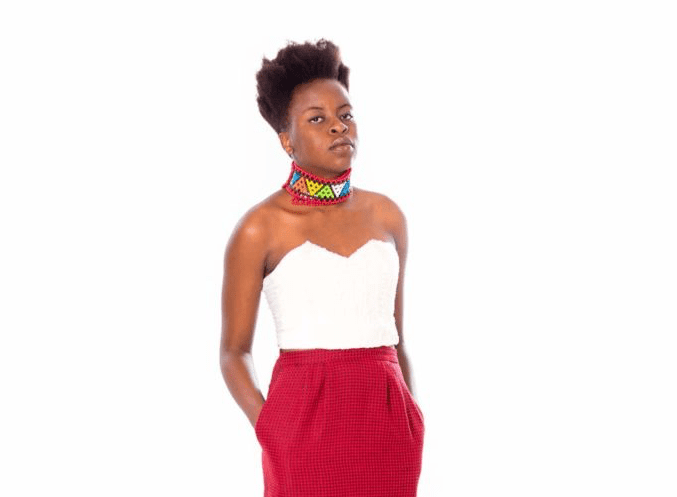
[bctt tweet=”You won’t find anyone else who will be as honest with you as you are with yourself” username=”SheLeadsAfrica”] Model….. what comes to mind is the svelte size zero figures, catwalks, high fashion and of course the G_L_A_M_O_U_R! And usually when we talk about Runway Fests, its all about the gorgeous models working the runway and less of the amazing superstars behind these events. With that said we decided to challenge the norm and spotlight a poet, writer, model and entrepreneur from Blantyre, Malawi who goes by the name Sharon Kadangwe. Sharon has a degree in Counselling Psychology but is also passionate about fashion, arts and empowering girls. She has been modelling professionally since 2012 and has appeared in fashion shows in Blantyre and Lilongwe. Sharon has also appeared in several themed photoshoots and adverts for Airtel and Nedbank. Her interest in the fashion industry grew beyond modelling over time as she became one of the founders of the Winter Ankara Fashion Expo (WAFE) an annual street fashion show which occurs in Blantyre and started in 2015. Is it possible for a teen starting her modelling career to just breakthrough without undergoing a training of some sort? It depends. In other circumstances some of the best models have just been scouted in the street. Scouted means they are seen by someone who works in the fashion industry and then from there their careers start, they then train as they work. Most international models start their careers like that, locally we have Jack Thunde who was scouted in South Africa. You then have another group of models who make it because they are hard-working and passionate and they get training. In our industry, it’s not everyday that someone is scouted so you would have to train and practice if you want to find jobs as a model. What makes WAFE different from other festivals? Everything about WAFE is unique. The name is unique, where it occurs is unique and how we do it is unique. We are the first fashion show in the history of Malawi to be held on the street. The Winter Ankara Fashion Expo (WAFE) is an event that we created after we realized that most fashion shows in Malawi were centered around the capital city and the summer season. We hold it at the end of July, which is the end of the cold/winter season in Malawi and we have it on Victoria Avenue. The reason why we chose that particular street is because of its history and the significance it has in the present day. We also wanted to have an event created by Blantyre, for Blantyre that anyone could enjoy. Which is the most important, strong headliners or strong supporting acts? Great question. Being someone who’s been on both sides (attending and planning an event) I would say headliners are important but supporting acts can also make or break the headliner. The tricky part is in finding both strong headliners and strong supporting acts at one event. The aim of WAFE is also to promote youth entrepreneurship within the fashion industry. Is it going according to how you envisioned it? Yes. It has. Response from the event so far has been positive not only from the attendees but the designers. We have been able to provide a platform for different types of designers, especially upcoming ones. Models we have auditioned and trained have gone on to parade in different shows and campaigns all over Malawi. That’s what we wanted to do; give people a platform to people so that they grow and develop with the skills they learn and empower others to do the same and that chain keeps going until the industry expands and grows and I believe with time that will happen. [bctt tweet=”You can’t have competition without innovation – Sharon Kadangwe” username=”SheLeadsAfrica”] How competitive is the industry? It’s competitive, challenging and slowly responds to change. I believe most of the competitiveness comes from selfish ambition and greed. If we had a lot more people willing to collaborate with others to grow the industry things would move at a faster pace. But at the same time you can’t really call it competitive when people don’t come up with their own creative ideas they just copy what others do. You can’t have competition without innovation. You’ve had much experience with festivals now. What seems to get easier with time? Hahaha, I wouldn’t say 2 years is a lot of experience but I have definitely learnt a lot about myself, what I can do, how people think, how to work with others and how to talk to people from all walks of life. The only thing that becomes easier is seeing where you made mistakes and being willing and able to fix them. We have had a lot of disappointments and setbacks over the past 2 years and being able to pick yourself from that and forging ahead is also something that comes with time. What doesn’t get easier is the same thing; experiencing a setback, making a mistake and getting disappointed. It goes both ways. Managing events is an unpredictable industry. You can plan everything to the last second but anything can happen. Nobody ever expects bad things to happen, but they do. What matters is how you deal with them Can you share with us your greatest work related accomplishment I have a few accomplishments that I’m proud of but at the top of my list would have to be featured on africa.com, I was given an opportunity to talk about WAFE and all the things I do. I also performed poetry and gave a talk to female students at the S.H.E empowered retreat for girls last year. It was amazing to have such an opportunity, when I was in school I hoped for such events to happen and so I’m really glad I was able to share my story and my art to other young ladies. Fun question! Do you ever talk to yourself? When and
Ginika Okafor: I wanted to create colourful products that are uplifting in every way
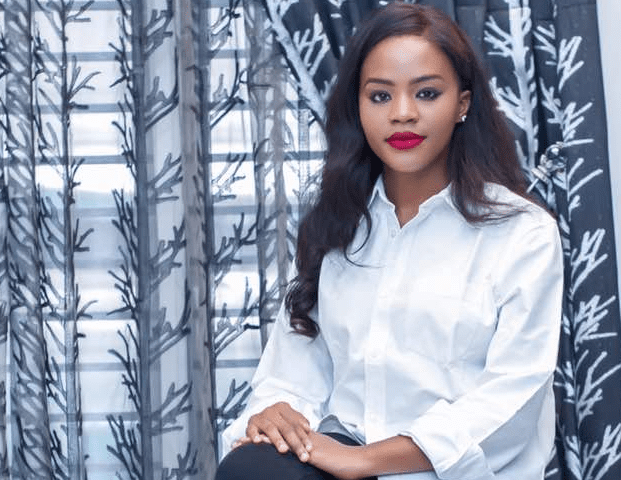
[bctt tweet=”Being an entrepreneur is no child’s play in Lagos – Ginika Okafor, founder Yili Footwear ” username=”SheLeadsAfrica”] Ginika Okafor is a lawyer, art lover and a Motherland Mogul showing that young Nigerians can wear #MadeinNigeria with pride. In between trying new foods, visiting new countries and experiencing their culture, Ginika designs and creates footwear. Her brand Yili is fun, colourful and Nigerian-made. Ginika is secretly an adrenalin junkie, so you may catch her either bungee jumping or sky diving (but just make sure her dad doesn’t read this). Here she shares with us the challenges of sourcing local materials in Nigeria and sums up what it means to be an entrepreneur in Lagos in three words. Why did you decide to start Yili? I love colours. I like to be surrounded by bursts of colours and as a result I infuse a lot of colours in my everyday outfits and surroundings. With this in mind, I started Yili because I wanted Nigerian-made and sourced footwear, which infuses bursts of colours in its aesthetics. Furthermore, I notice colours have positive effects on moods and I wanted to create colourful products that are uplifting in every way. This is why you find most of Yili slippers are combinations of different bright colours. Also, there is an option for customers to choose the particular materials and colours that will go with our existing designs. This makes each footwear more personal, unique and more meaningful to each customer. How have you (or do you) overcome challenges that your business faces? One of the many obstacles I faced so far is the sourcing for materials locally. We get our leather from the local markets, and what is available this week may be sold out the next. I overcome this struggle by widening my local contacts. This means I travel across Nigeria in search of good local manufacturers selling quality materials. This also affords me the opportunity to see different parts of country and to better understand the culture and everyday living experience of many Nigerians. Also, due to the exchange rate crisis, the prices of a lot of our raw materials have increased in price thereby forcing us to increase our prices. In this forex instance, I can’t really do much but hope the price of forex comes down. All in all, I have learnt to continue to push through in spite of various obstacles. #andyetshepersisted. [bctt tweet=”Sourcing for local materials have taken Ginika Okafor to very interesting parts of Nigeria ” via=”no”] Can you share the process of sourcing for materials as a 100% made in Nigeria brand? Our products contain different materials from leather to adire to calico etc. What many people don’t know is different parts of the country specialise in different goods/material. Take ake adire for instance. The best adires are found in Abeokuta. So, when I’m buying my adire I don’t buy it Lagos; I travel to Abeokuta, speak with different families and vendors that have produced adire for decades. I learn from them on what is new, how they come up with new designs and so on. This applies to all the materials we use. Sourcing for local materials have taken me to very, very interesting parts of Nigeria and I hope to tell the different but amazing stories in a memoir one day. Where do you see Yili in the next two years? Expanding. This expansion includes opening a local manufacturing plant, having our own standalone stores in in Lagos, Abuja, Port Harcourt and Kano as well as in three African countries. We would like to partner with various independent retailers to stock our products. However, we want to ensure that whichever store we stock in must understand the ethos and vision of the brand. Also, we want customers to be able to order Yilifootwear from our website and have it delivered anywhere in the world. What do you think is necessary to take Yili to the next level? We need funding. Expanding the business requires a lot of money we don’t have now even though we are open to investors. Also, we believe having a e-commerce website will not only give the brand the visibility it need but it will improve accessibility too. We are currently working on our website, once that is up and running anyone can order Yilifootwear and we be shipped worldwide, thereby expanding the brand presence globally. What’s your favourite Yili footwear design? The Max slippers because I named it after my eldest sister who has been a huge support and inspiration in my life. #loveyouMaks What three words describe being a young female entrepreneur in Lagos today? Being an entrepreneur is no child’s play in Lagos. It is a wilderness out here and every day is the survival of the fittest. That said, being an entrepreneur (especially a female entrepreneur) can be described thusly Perseverance Hardworking Hopeful If you’d like to share your story with She Leads Africa, let us know more about you and your story here.
Facebook Live with Ink Eze: How I grew AsoEbiBella to one million followers(June 21)
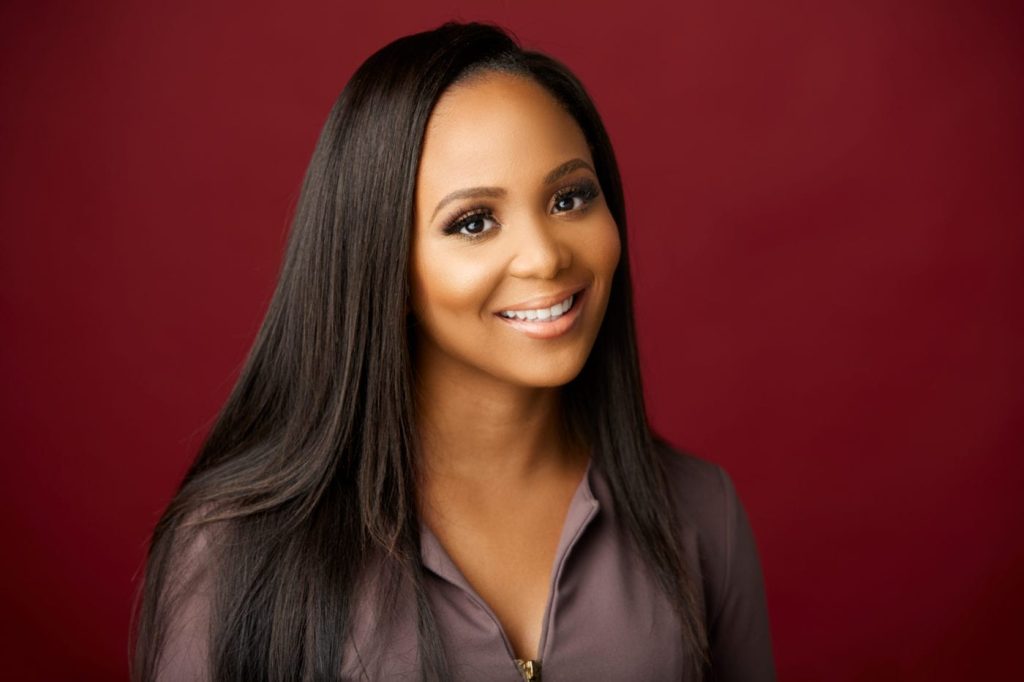
Whatever it is you do, or services you provide, you need social media and digital marketing to grow and boost your business. If you’re thinking you can only reach young people on social media, you’re wrong. Even our yummy mummies and daddies are online ready to patronize you and your product. This is 2017, there’s no time for dulling. Its about time you master the tools and strategies of online marketing, to enable you reach your target audience. As part of our Boost Your Business digital marketing training series, we are bringing you a Facebook Live session on Wednesday June 21st with Ink Eze. Ink is the founder and brains behind the famous African fashion online community, AsoEbiBella.com . She’ll be sharing with us some of the tools she’s used to grow the AsoEbiBella platform, and get over 1 million followers on Instagram. [bctt tweet=”Ask Ink any questions about how to grow your audience with social media. Facebook Live( June 20)” username=”SheLeadsAfrica”] Register below to get the exclusive link to join this session Some of the topics we’ll cover Best practices to generate brand awareness and reach your target audience How you can leverage Facebook, Instagram and other social and digital platforms to market your business. Key digital marketing lessons Ink has learned since founding AsoEbiBella Must-know social media and digital marketing techniques and tools to drive traffic and generate revenue Facebook Live Details: Date: Wednesday June 21st 2017 Time: 2pm Lagos// 3pm Johannesburg// 4pm Nairobi Where: facebook.com/sheleadsafrica/ Watch here: https://www.facebook.com/sheleadsafrica/videos/1900264340196877/ About Ink Ink Eze is the Founder of AsoEbiBella.com, a platform for sharing African traditional styles. She became BellaNaija Weddings editor in 2013, and Assistant Editor of BellaNaija, heading the lifestyle section – style, beauty and living until January 2017. In her early years, she was head girl of her secondary school. Ink attended the prestigious United World College of the Adriatic, then studied modern culture and media at the Ivy League Brown University. Under her leadership, BN Weddings gained international prominence and became Africa’s foremost wedding media brand with millions of followers across several platforms and coverage on BuzzFeed, BBC & more. She’s conceived of BBN Wonderland, Nigeria’s top bridal event since 2015 with Baileys Nigeria. Now she spends her time on AsoEbiBella and sharing her insights with the world. For more Ink, join her on @Ink.Eze | @AsoEbiBella
Chinero Nnamani: I want to be remembered as a conscientious person who was Black, a Woman, and Proud
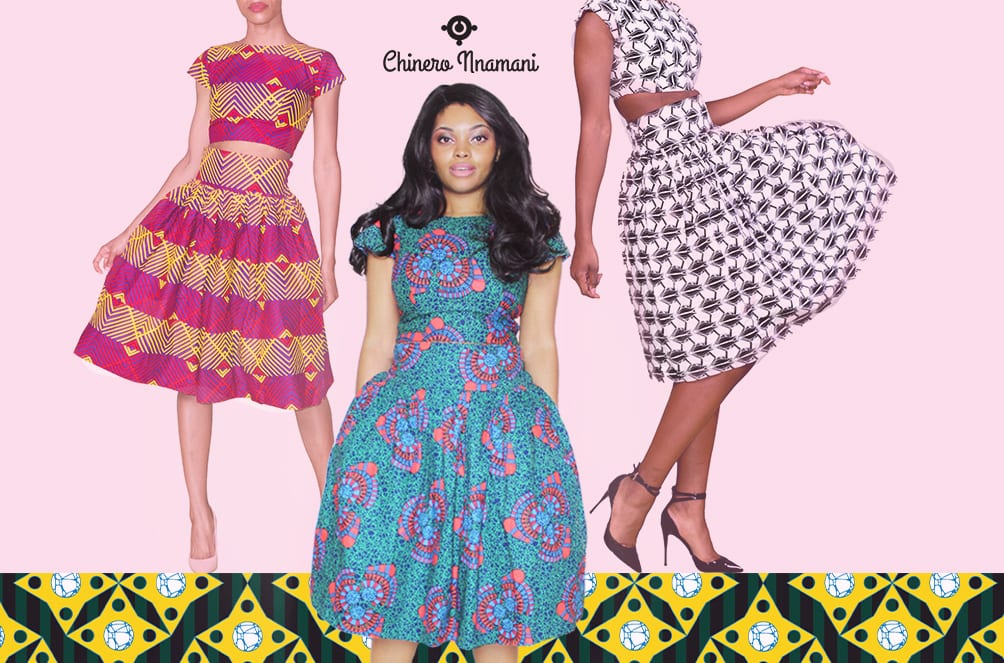
[bctt tweet=”I created @ChineroNnamani to celebrate & give well-deserved credit to Africa’s influence in our culture” via=”no”] Since childhood, Chinero Nnamani has been fascinated by the world around her. As someone with too many ideas, deciding a career wasn’t a straightforward process. Chinero wanted to be a nurse, a graphic designer, a lawyer, a social activist, an inventor, a politician, a psychologist…and the list goes on. In her search for a calling, Chinero learned about: computer science and graphic design in Sweden, creative writing and public policy in California, philosophy and psychology in London, statistics and data management in India, anthropology and human anatomy in Nigeria, and much more. With these experiences, Chinero learned how deeply embedded African influences were to the foundations of civilizations. She then created the Chinero Nnamani brand to celebrate, and give well-deserved credit, to Africa’s influence in our culture and other cultures throughout the world. How do you blend technology and art in your aesthetic? The many interconnections between technology, mathematics, and art provide a wealth of material to emphasize the fusion of African influences. My patterns tend to also celebrate math and technology with geometric influences, and the use of simple grids and linear perspective. The symbiosis of art and technology, in my opinion, allows for the most striking prints and clothing designs. You make your own original prints, how easy or difficult has it been creating them? I enjoy making prints by hand, but I can’t emphasize enough how technology has changed the game, and become integral to how I create my patterns, as it is incredibly convenient to travel with a tablet and stylus. So to answer your question, it is very easy and fun to create my prints! Can you tell us more about what you worked on before starting your brand? Before starting my brand I worked as a freelance graphic designer, illustrator and web designer. I also worked as the Practice Manager of a Mental Health clinic. These experiences have only helped consolidate my undergraduate experiences, and contribute to my personal and professional growth as a thinker, advocate, collaborator, manager, and leader. What was particularly challenging to you when you decided to create the Chinero Nnamani brand? The most challenging aspect of starting the brand was human resources, and finding and/or training reliable people to uphold my quality standards in Nigeria. You really have to firmly and consistently foster an organizational culture of efficiency and high quality in Nigeria, or the quality will suffer without proper systems in place. Fortunately, I have steadily built an amazing team of people in Nigeria that are always eager to learn and excel. [bctt tweet=”…the most valuable things I learned were how embedded African influences were to the foundations of civilizations.” via=”no”] You are present online and your flagship store is at the Jabi Lake Mall in Abuja. How did you go about opening the physical store? Opening the store in Jabi, Abuja was a beautiful experience. From our massive ornate mirrors, to our gold shelving, and blends of ornamentation and joyful visuals, I really was able to fulfill my vision for the space and have it emphasize global acuity and African pride. What’s the creative process like for you? Where do you go, and what do you do, when you need inspiration? I typically begin with a simple doodle or sketch in a moleskin notebook. I like to be out in nature or sitting by a window when I want to create. Inspiration is drawn from the fluid forms and sharp colors of nature, music, traditional food, Nigerian folk art, masked dance, ancestral drums, Igbo attires, and the shear wealth of African influences and innovations in cultures and textiles throughout the world. What is your three-year growth plan for Chinero Nnamani? My three-year growth plan for the Chinero Nnamani brand is pursuing more expansion opportunities in the U.S. with physical store locations in malls, and pop-up events. I also plan to release more lifestyle products like furniture, leather goods, and more! In one sentence, how will you like to be remembered? I want to be remembered as a conscientious person who was Black, a Woman, and Proud. This is a sponsored post.
